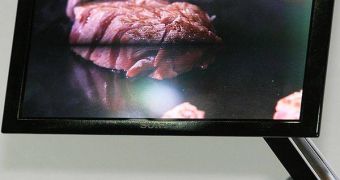A group of companies and research institutes has recently announced that it has obtained groundbreaking results in its attempt to find alternative replacements for incandescent and fluorescent light bulbs. By using proprietary cavity organic light-emitting diode (COLED) technology and light-emitting polymers, the effort has managed to produce highly efficient light sources, which could provide a more sustainable alternative to the existing, polluting methods, in the future. Behind the investigation have been the independent, nonprofit research institute SRI International, the Japan-based chemical industry company Showa Denko K.K. (SDK), and the Itochu Plastics Inc. (CIPS) company.
“With our new cavity design, SRI has significantly increased the efficiency of OLED devices. These new results validate our strategy of focusing on new device architectures to improve the performance of OLED devices,” SRI International's Business Development Director, Philip von Guggenberg, explains. The COLED device is a newly designed structure, building up on the classical OLED. It has been made by SRI Project Team Leader and Senior Chemist Dr. Yijian Shi, and makes use of specially designed cavities to emit about five times as much light as existing OLED structures.
“Showa Denko is excited about this promising development. With SRI's help, we expect to make this technology available to the lighting industry as early as 2010,” SDK's President, Mr. Kyohei Takahashi, says. “SRI's COLED device will bring an innovative breakthrough to the lighting industry and the world's energy conservation efforts. I am proud of what the SDK, SRI and CIPS team has accomplished in such a short period of time,” Itochu Plastics Inc. President Ryuichi Komatsuzaki adds.
According to the researchers, the new structures can emit up to 30 lumens per watt for blue light, which is higher than the output obtained by any other OLED structure today. The advancement was made possible through the use of SDK's light-emitting polymers, which considerably augmented the COLED instruments. Additionally, the team reports, the new structures were able to emit about 80 lumens of green light, which, alongside blue and red light, are required to produce the standard white light of traditional light bulbs.

 14 DAY TRIAL //
14 DAY TRIAL //